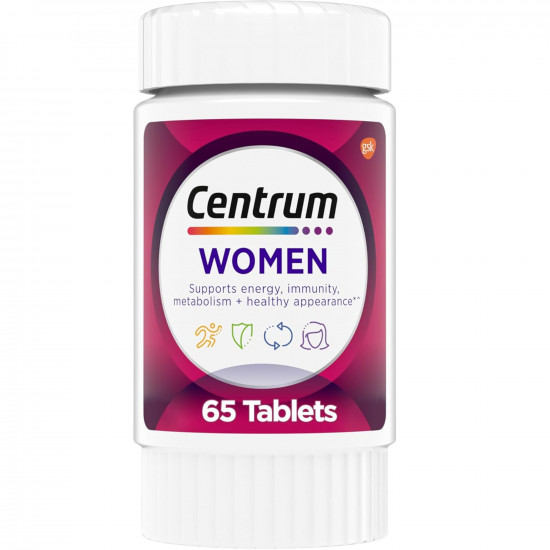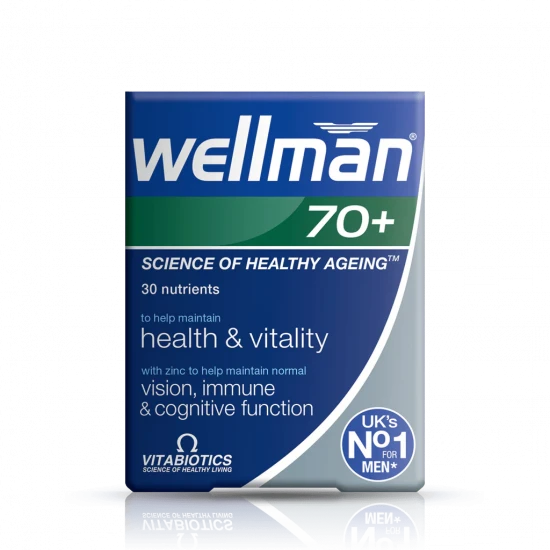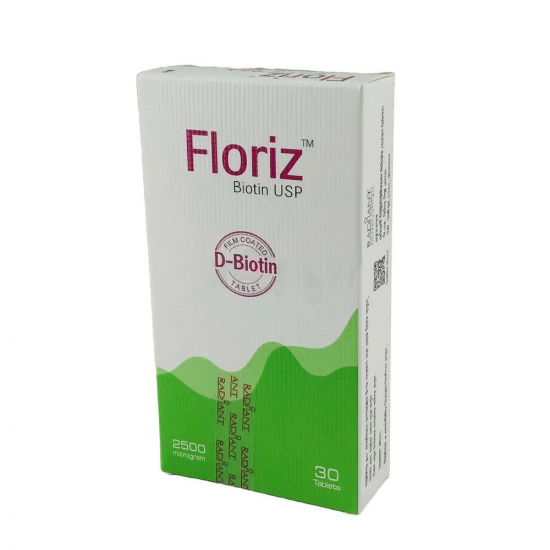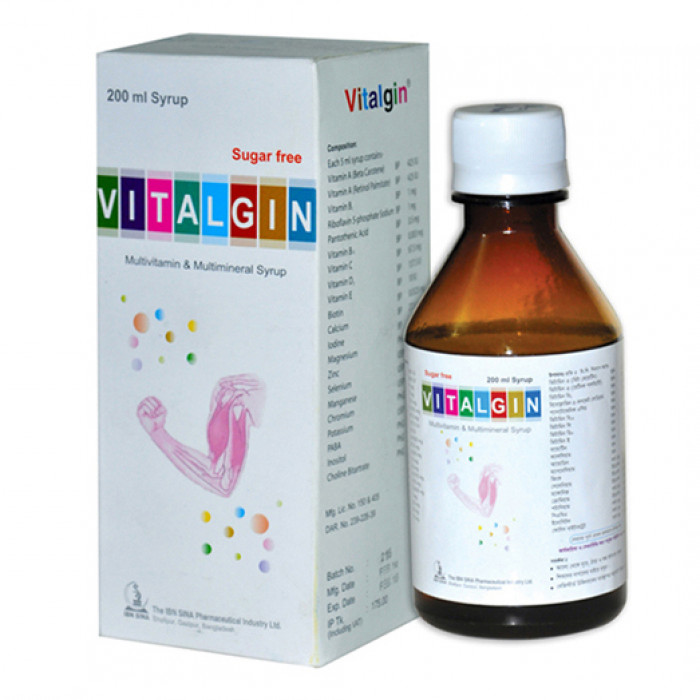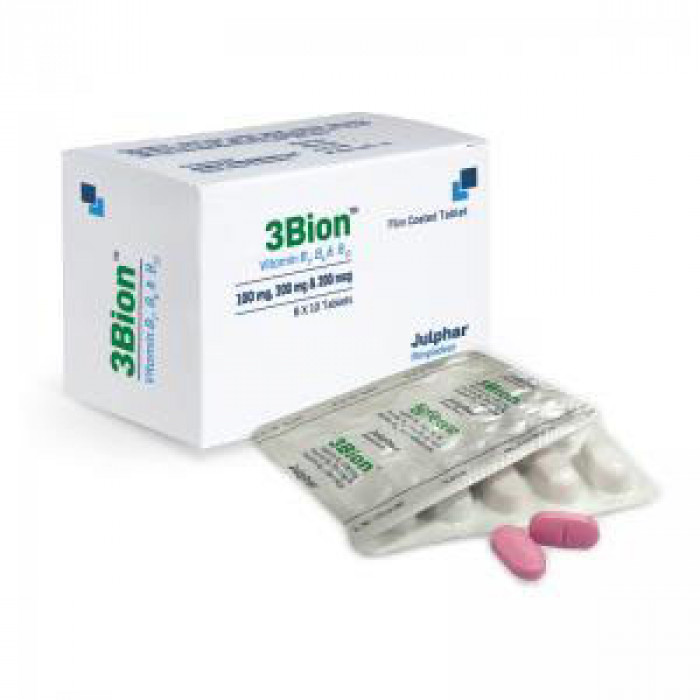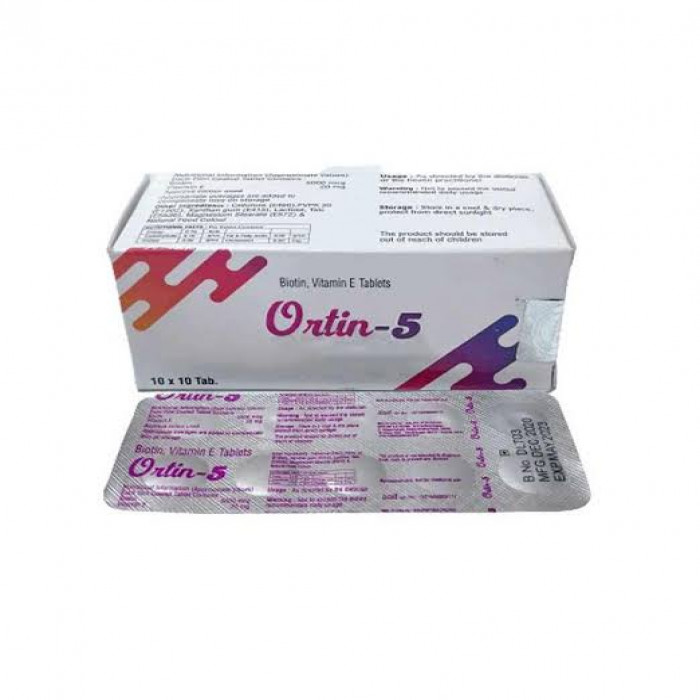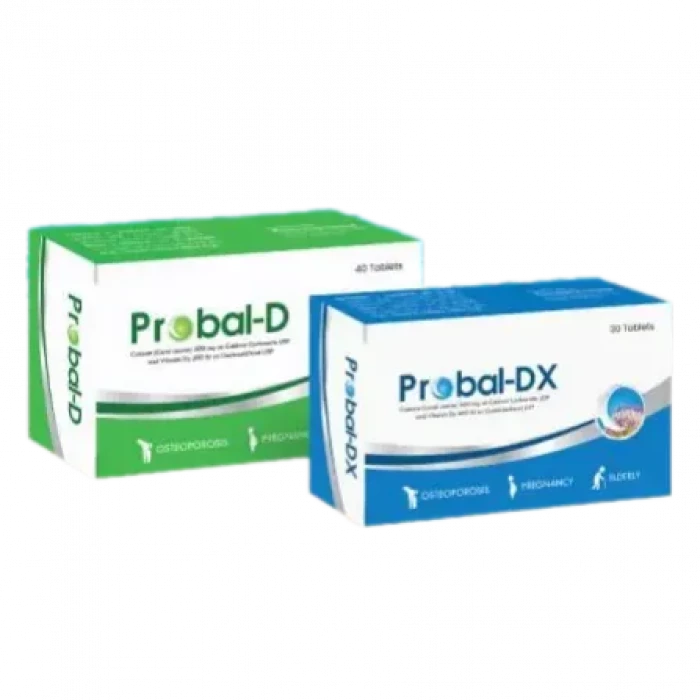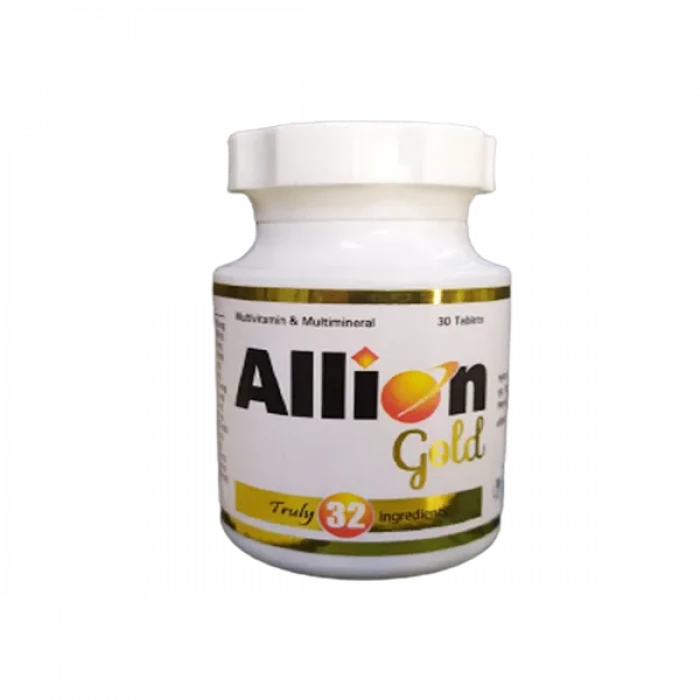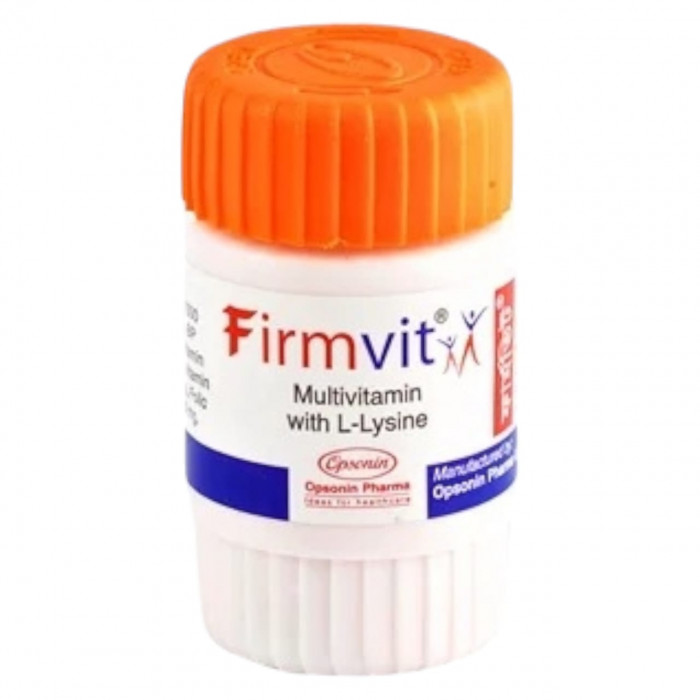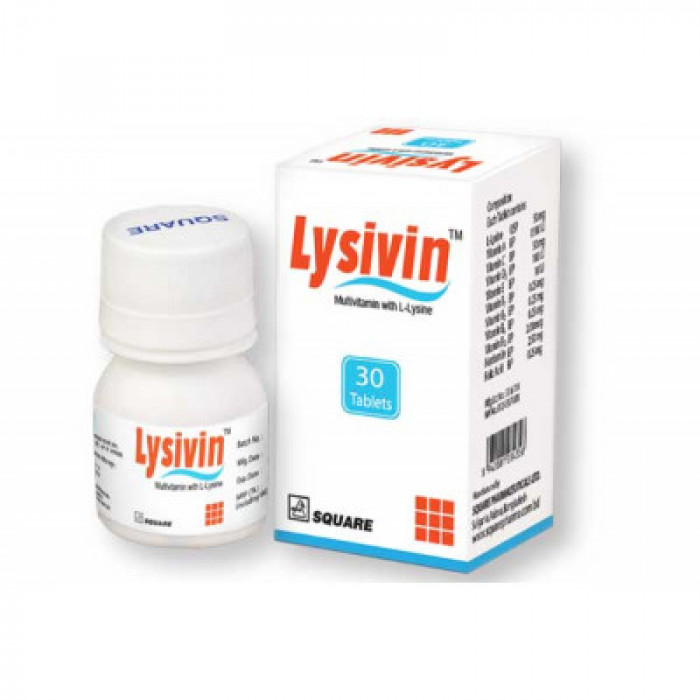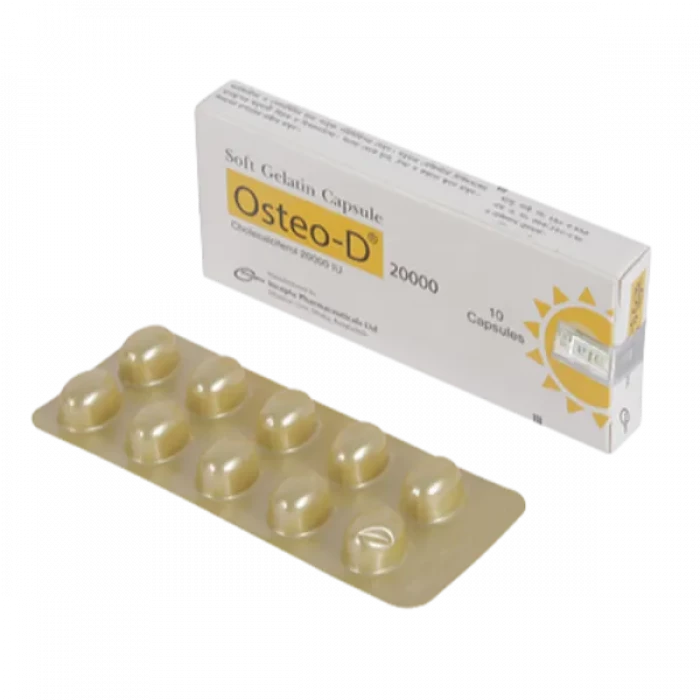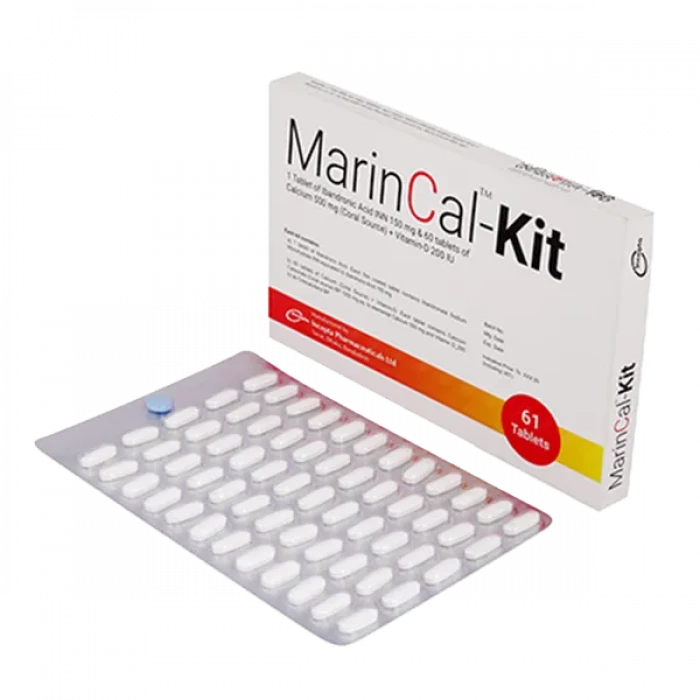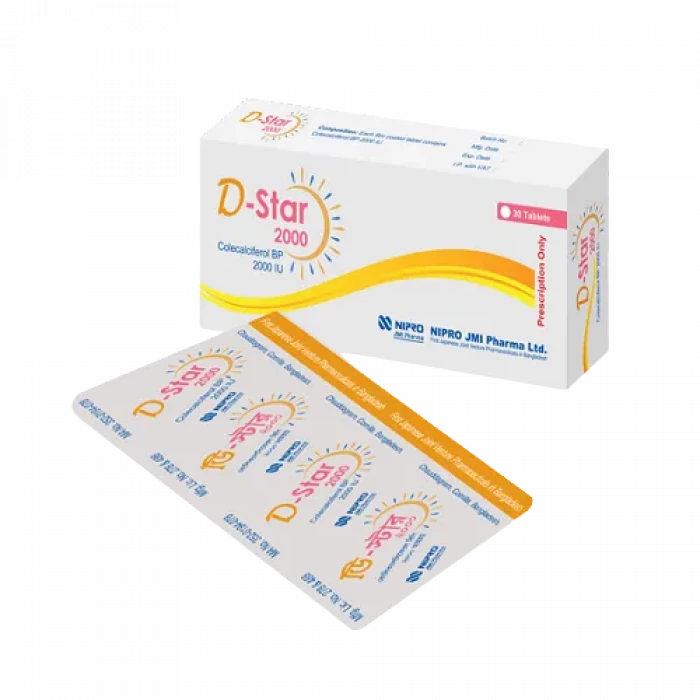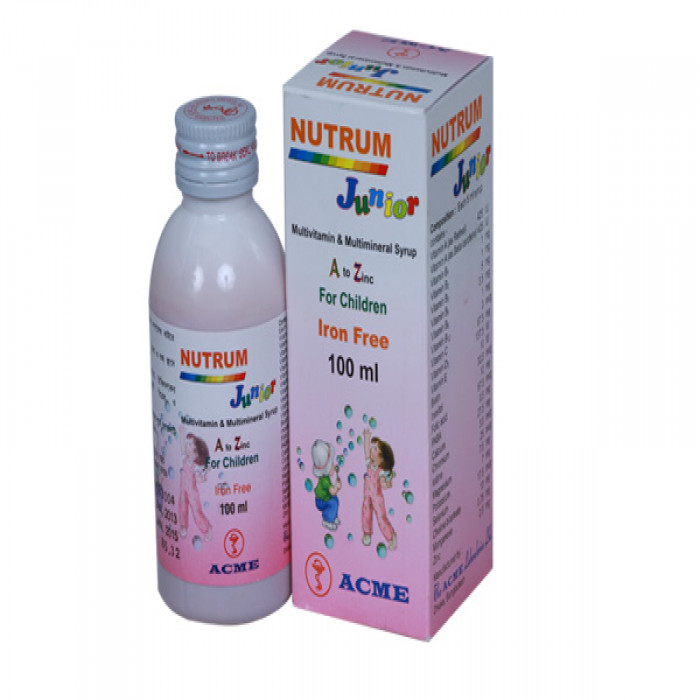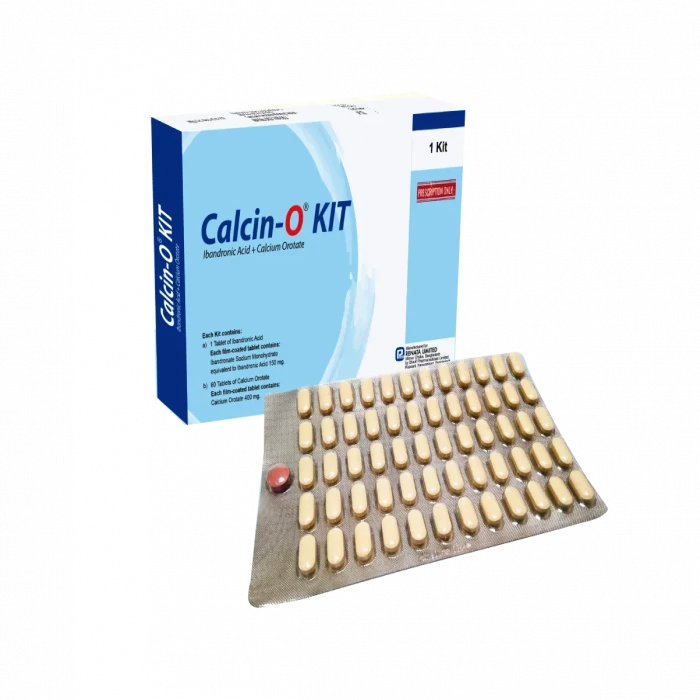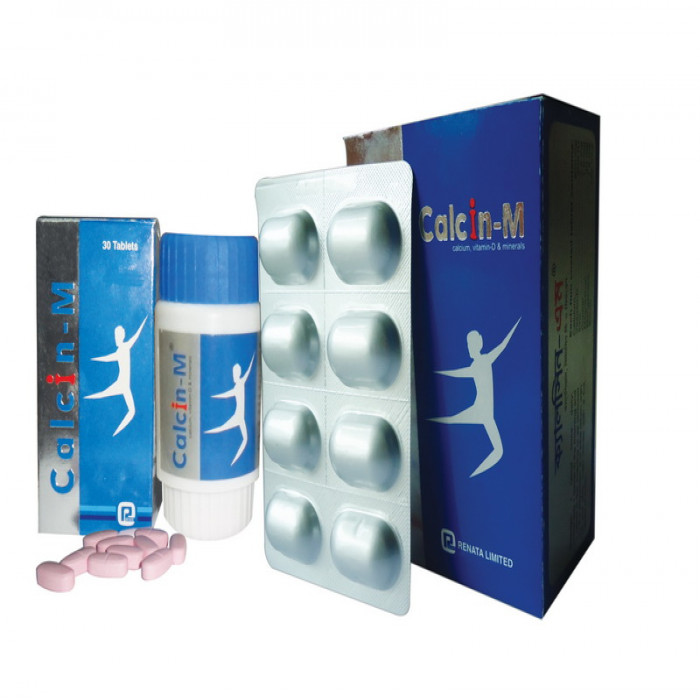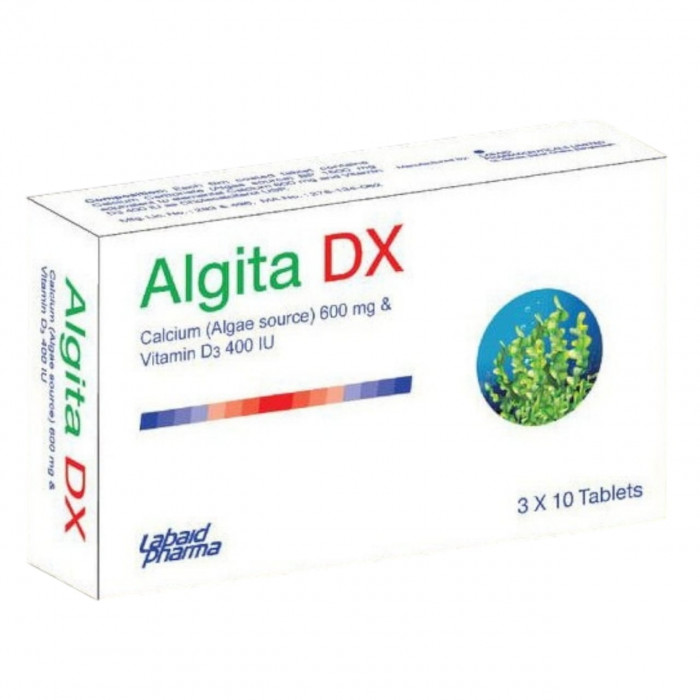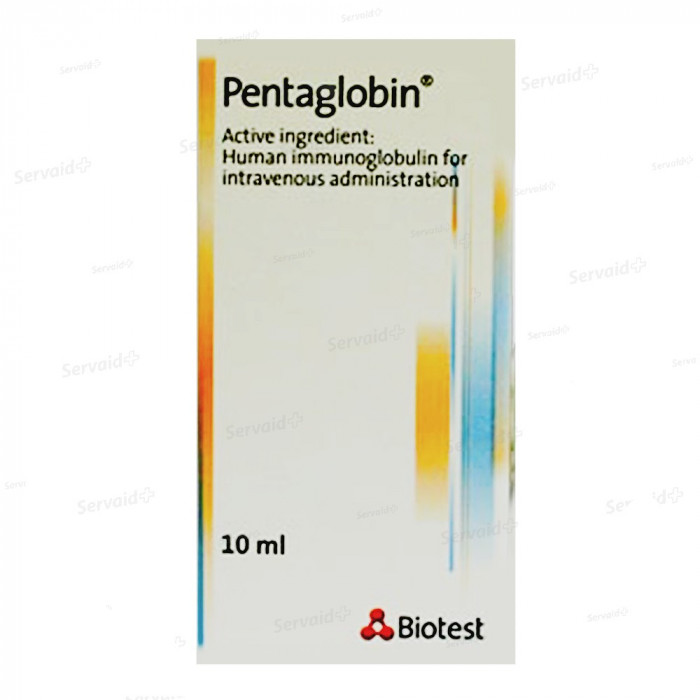
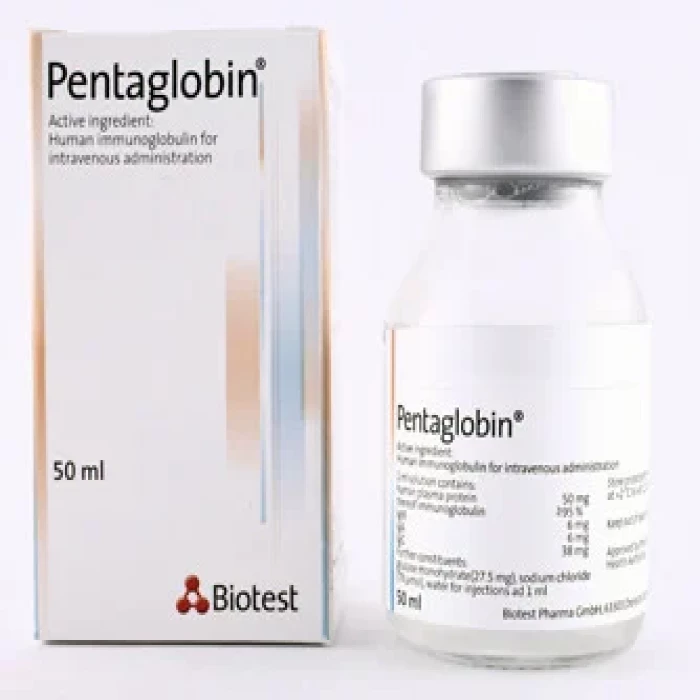
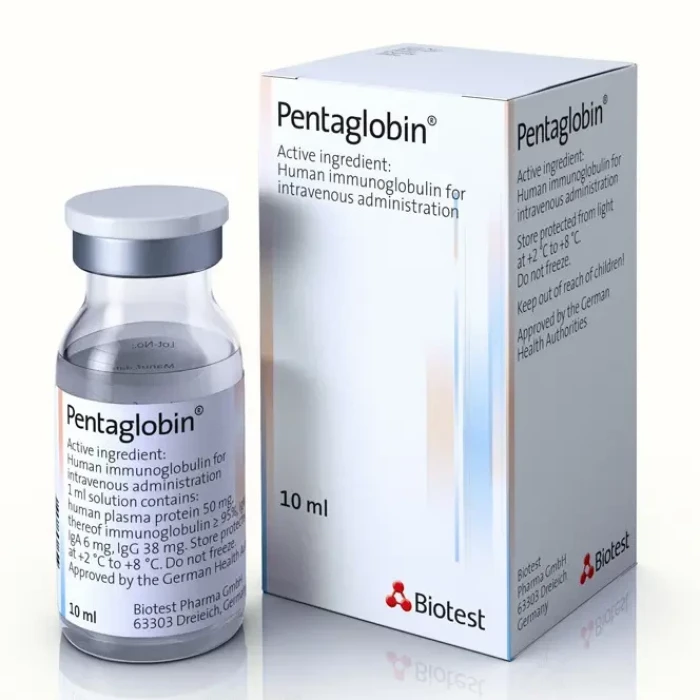
✔ 100% Authentic Product
👁️ Currently Viewing 3169
Pentaglobin-IV Injection 10ml
Generic Name: Human Immunoglobulin-G 500/5mg/ml
UniMed UniHealth Pharmaceuticals Ltd
Discount
Price: ৳ 6,860
MRP:
৳
7000
2%
Off
✅ Description:
Indications
Human immunoglobulin-G (IgG) is indicated in:
- Treatment of primary immunodeficiency
- For combined therapy with antibiotics in severe bacterial or viral infections
- A-/Hypogammaglobulinemia
- Idiopathic Thrombocytopenic Purpura
- Guillain-Barre Syndrome
- Kawasaki Syndrome
In order to reduce the danger of infection in those with weaker immune systems, pentaglobin is used to boost the body's natural immune system. This is created from healthy human blood, which is rich with certain defense mechanisms (antibodies) that aid in the battle against infections. In the first 100 days following a bone marrow transplant, pentaglobin has been demonstrated to be useful in preventing both systemic and local infections in patients > 20 years of age. It is recommended for the treatment of primary immunodeficiency conditions where the ability to produce antibodies is severely impaired. You are more vulnerable to infections as a result. In order to combat infections, it provides you with antibodies that your body is unable to produce on its own. Adults and children can both benefit from this therapy. The medication is given intravenously.
Dosage & Administration
Neonates and infants: 5 ml (250 mg)/kg body weight daily on 3 consecutive days. Further infusion may be required depending on the clinical course.
Children and adults:
For combined therapy with antibiotics in severe bacterial or viral infections and A-/Hypogammaglobulinemia: The usual dosage for adults and children is 2500-5000 mg and 50-150 mg/kg respectively (as a single dose) by intravenous drip infusion or direct intravenous infusion. In case of intravenous injection, it should be injected very slowly.
For Idiopathic Thrombocytopenic Purpura: The usual dose is 200-400 mg/kg daily given for 5 consecutive days. The additional doses are discontinued if an adequate response does not occur.
For Guillain-Barre Syndrome: The usual dosage is 400 mg/kg daily given for 5 consecutive days.
For Kawasaki Syndrome: The usual dosage is 400 mg/kg daily given for 5 consecutive days (approximately) or 2000 mg daily by intravenous drip infusion. It is recommended that the administration starts within 7 days from the onset of Kawasaki Syndrome.
The human normal immunoglobulin is for intravenous use only. For intravenous injection, it should be injected very slowly. The product should be warmed to room or body temperature before use. The human normal immunoglobulin should be infused intravenously at the following rates:
0.01~0.02 ml/kg/min for the first 30 minutes and then the infusion rate can be gradually increased maximum of 0.06 ml/kg/min if no abnormal sign appears from patients. This infusion can be recalculated on an hourly basis; it is 0.6~1.2 ml/kg/hr and 3.6 ml/kg/hr (maximum).
General cautions:
The human normal immunoglobulin is for intravenous use only.
When a needle is inserted through the rubber stopper, the needle should be inserted vertically and slowly. If a needle is inserted in a tilted or twisted direction, rubber fragments may be mixed with the medicinal products. If there are any rubber fragments, discard the product.
The vial should be inspected for visible particulate matter and color prior to administration. Do not use the vial if particles are detected. Do not use if turbid.
Several vials may be pooled into an empty sterile solution container by using an aseptic technique if large doses are to be administered.
The human normal immunoglobulin cannot be diluted with intravenous fluids. Other medications cannot be injected into the intravenous tubing being used for the human normal immunoglobulin. In the case of idiopathic Thrombocytopenic Purpura for children, spontaneous remission should be considered.
Additional administration to patients with Kawasaki Syndrome should be conducted when the effectiveness of immunoglobulin is insufficient (e.g. symptomatic remission) or additional administration is clearly necessary.(Safety and efficacy for additional administration has not been established)
Patients should be aware of the risk and discuss with their healthcare professionals and contact them if any signs or symptoms of thrombosis during or after receiving this product develop.
Healthcare professionals should be aware of the risk for thrombosis with human normal immunoglobulin products and discuss with their patients the risk of thrombosis associated with this product.
There is a possibility that live vaccines (measles, mumps, rubella and varicella vaccine etc.) do not work for the patients who were treated with human normal immunoglobulin. Therefore vaccination should be delayed for 3 months after administration. If human normal immunoglobulin is administered within 14 days after vaccination, re-vaccination should be taken after more than 3 months post administration.
After a large bolus (more than 200 mg/kg) administration for the ITP and Kawasaki disease, use of live vaccines should be delayed more than 6 months. In case of low risk of measles infection, measles vaccination can be delayed more than 11 months.
Interaction
Because the immunoglobulins may interfere with the immune response to live measles, mumps, rubella, and varicella vaccines, these vaccines should be administered at least 3 weeks before or 3 months after the immunoglobulins.
Contraindications
Patients who have experienced anaphylaxis or severe systemic hypersensitivity reactions to the administration of human normal IgG are contraindicated.
Side Effects
Symptoms of shock may occur. If dyspnea, wheezing, chest pain, hypotension, or weak pulse are watched, the administration should be discontinued and 0.1-0.5 ml epinephrine (1:1000) or the administration of cortisone should be considered.
Rapid administration can cause hypotension.
Liver function disorders or jaundice accompanying an increase in ALT or AST may occur. Caution should be taken and proper treatment should be followed if needed.
Renal failure may occur with the use of human normal immunoglobulin. If dehydration, hypothesis, an increase of creatinine or an increase of BUN, etc is observed, the administration should be discontinued and proper treatment should be taken.
Aseptic meningitis from a large volume of IVIG administration may occur.
A decrease in platelets may occur. Other possible undesirable effects include drowsiness, chill, chest pain, abdominal pain, gluteal pain, and anxiety, etc.
Pregnancy & Lactation
The safety of a pregnant woman has yet to be determined. The risk of parvovirus B-19 infection cannot be ruled out when human normal immunoglobulin is given. Fetal abnormalities (abortion, hydrops fetalis, and fetal mortality) may occur as a result of parvovirus B-19 infection. Only if the expected benefit outweighs the potential risk can human normal immunoglobulin be administered to a pregnant woman. The use of this product in breastfeeding mothers has not been studied.
Precautions & Warnings
Human normal immunoglobulin made from human plasma has the potential to spread hepatitis virus or other viruses. Therefore, it is recommended that patients with hemophilia or immunodeficiency be properly vaccinated (hepatitis A vaccine, etc.), and the treating physician should regularly monitor the patient for any signs of viral infection.
Regardless of the route of administration, and in the absence of known risk factors (old age, prolonged immobilization, hypercoagulable state, history of arterial or venous thrombosis, use of estrogen, permanent central vascular catheter, high viscosity, and cardiovascular risk factors) Under the circumstances, thrombosis may occur). For patients at risk of thrombosis, administer at the lowest possible concentration and the lowest possible infusion rate.
Severe hypersensitivity reactions and hypotension allergic reactions may occur. Patients with IgA antibodies are at increased risk of potentially serious hypersensitivity and allergic reactions.
Patients receiving IVIG reported patients with kidney disease (may worsen kidney function), acute renal failure/dysfunction, acute tubular necrosis, proximal tubular nephropathy, osmotic nephropathy, and death. You must ensure that the patient's capacity is not exhausted before IVIG is administered. IVIG should be given to patients who are considered to be at risk of developing renal dysfunction, including any degree of previous renal failure, diabetes, age over 65, insufficient volume, sepsis, paraproteinemia, or patients receiving known nephrotoxic drugs At the lowest feasible dose and infusion rate.
Patients with hemolytic anemia or hemorrhagic anemia (may be infected with human parvovirus B19 and persistent anemia may occur after infection). Patients with cerebrovascular disease or patients with medical history (elderly ischemic disease, patients with cardiovascular disease), disorders, cerebrovascular disorder or their medical history: Due to increased blood viscosity, a large amount of administration can lead to thrombosis or embolism, such as stroke, myocardial infarction, etc. )
Patients with high risk of thrombus or embolism (Thrombus or embolism may occur due to an increase of blood viscosity due to large bolus administration.)
Patients with low heart function.Aseptic Meningitis Syndrome (AMS) has been reported to occur following high dose (e.g. over 1.0 g per kg body weight) of IVIG treatment or rapid infusion of IVIG. The symptoms of AMS usually begin within several hours to 2 days following IVIG treatment. Discontinuation of IVIG treatment has resulted in remission of AMS within several days without sequelae. AMS is characterized by the following signs and symptoms: severe headache, nuchal rigidity, drowsiness, fever, photophobia, painful eye movements, nausea and vomiting.
Patients should take caution with IgA deficiency. (IVIG may cause anaphylaxis to patients who have anti-IgA)
Human normal immunoglobulin may contain blood group antibodies that may act as hemolysins and induce in vivo coating of red blood cells with immunoglobulin, causing a positive direct antiglobulin test result and hemolysis. Delayed hemolytic anemia can develop subsequent to IVIG therapy due to enhanced red blood cell sequestration and acute hemolysis, consistent with intravascular hemolysis, has been reported.
Non-cardiogenic pulmonary edema has been reported in patients following IVIG treatment. Transfusion-related acute lung injury is characterized by severe respiratory distress, pulmonary edema, hypoxemia, normal left ventricular function, and fever. Symptoms typically appear within 1 to 6 hours after transfusion.
Storage Conditions
Store and transport at 2°C to 8°C. Protect from light. Do not freeze. Keep out of the reach and sight of children
⚠️Disclaimer:
At ePharma, we’re committed to providing accurate and accessible health information. However, all content is intended for informational purposes only and should not replace medical advice from a qualified physician. Please consult your healthcare provider for personalized guidance. We aim to support, not substitute, the doctor-patient relationship.




